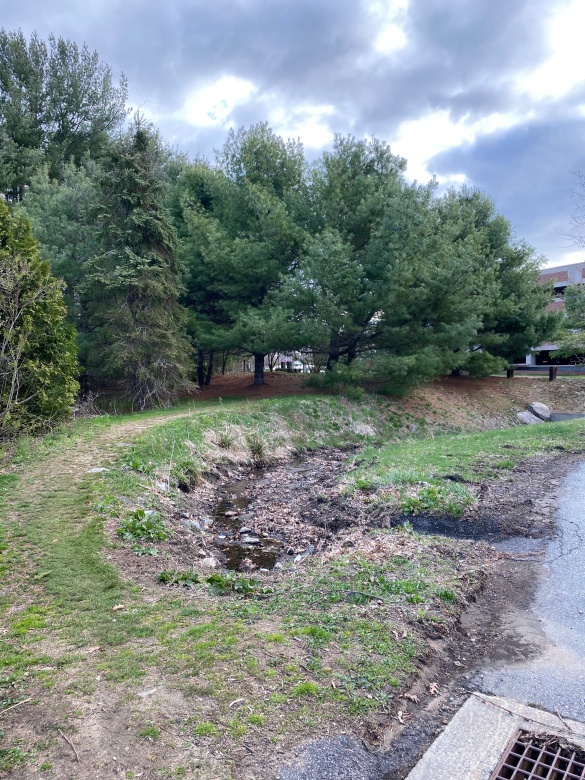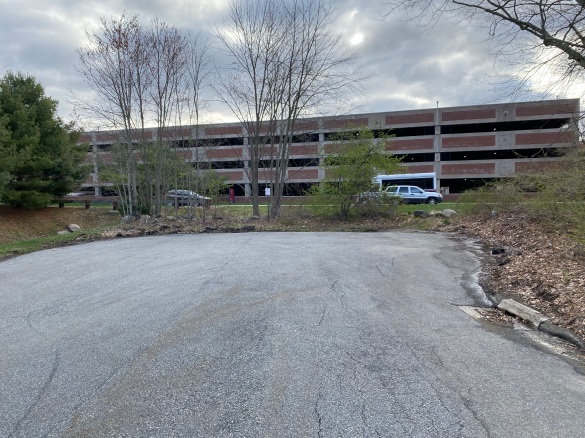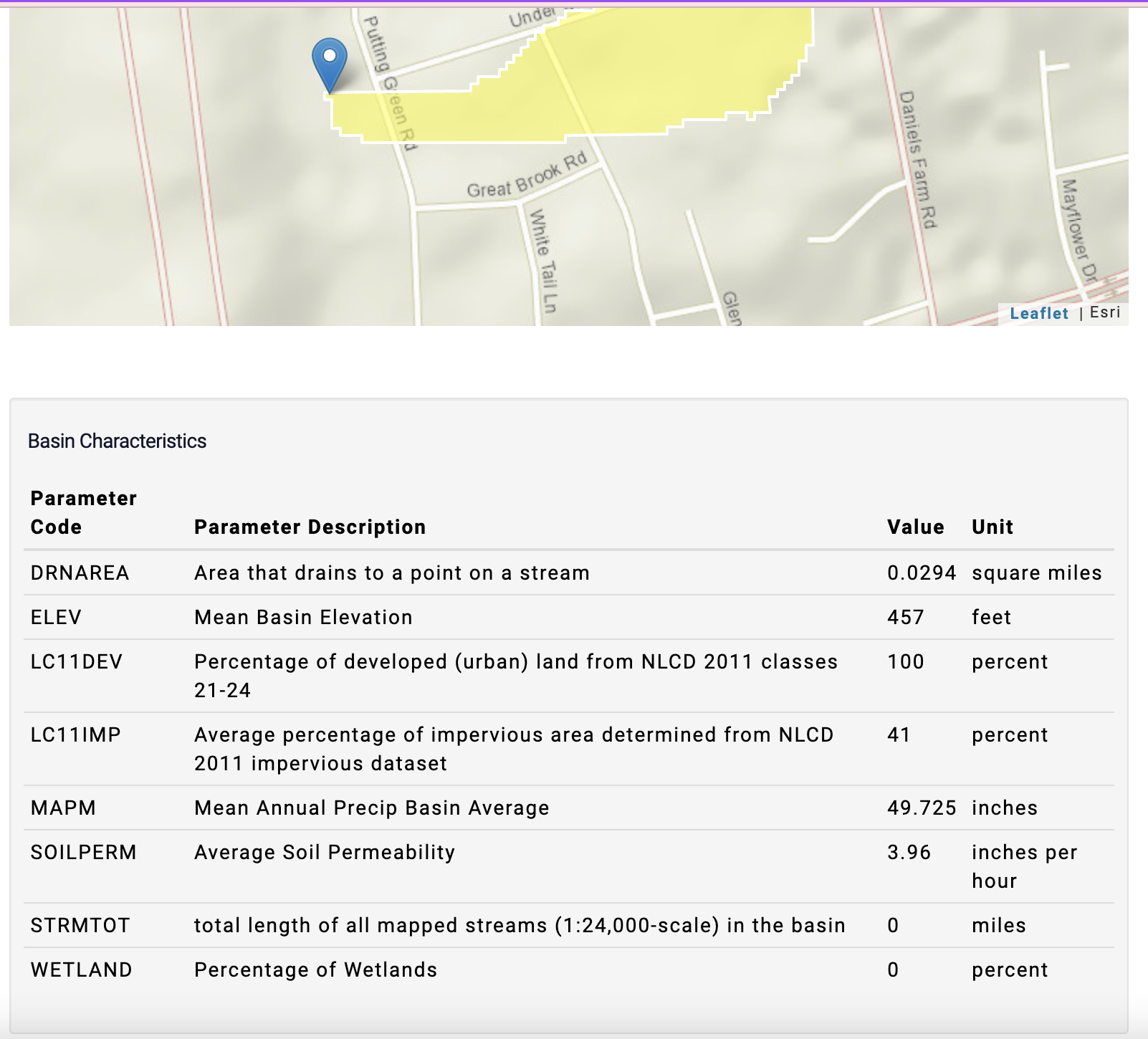Introduction
From my previous articles we have learned about my watershed’s characteristics and the inevitable changes it undergoes. In this article I will be discussing the practical and effective tools applied to restore or protect watersheds known as best management practices (BMP). From Watershed Academy Web we know there are 8 tools of watershed protection in developing areas to provide comprehensive watershed protection. My watershed is located along the perimeter of ECSU, a campus that is continuously evolving. By using the resource “StreamStats” was able to learn about the characteristics of my watershed. The percentage of developed land is 100% due to being surrounded by a college campus and close-knit neighborhoods consisting of families and college students. Furthermore, the percentage of impervious area is 53.6% which is for the same reason. The area that drains to a point on a stream is 2.98 square miles. The mean annual precipitation basin average is 49.797 inches and the average soil permeability is 5.11 inches per hour. The mean basin elevation of my watershed is 367 feet (USGS, 2016). In this article I will be focusing on the BMP my watershed undergoes which consists of aquatic buffers, non-stormwater discharges, and better site design.
Aquatic Buffers
An obvious BMP my watershed practices is aquatic buffers which is simply land adjacent to a wetland edge, a lake or estuarine shoreline, or steam bank where critically important ecological processes and water pollution control functions take place (Kwon and others, 2021). In simpler terms, aquatic areas where land and water meet require special protection which the buffers are in charge of. For my watershed you can clearly see the aquatic buffers in Figure 1 along the stream that is within my watershed that has many uses and benefits. The buffer along a portion of my watershed allows land development to be restricted, and physically separates the stream from future disturbance. This is extremely important for my watershed because it is located i an area that is constantly being renovated and developed, and the buffers prevent the stream from being harmed. As mentioned, my watershed is located along the perimeter of ECSU. Therefore, there is a significant amount of land use close to the stream, especially with a walking trail and Eastern’s Arboretum being alongside of it. Therefore, the buffer protects the water from pollutants and habitat impacts that come along with significant land use.
Furthermore, the buffers are responsible for regulating floods and sustaining the stream’s ecosystems and habitats. Buffers are land conservation areas that are essential to regulate light and temperature conditions, improving the habitat for aquatic plants and animals, effectively removing sediment, nutrients, and bacteria from stormwater and groundwater, and help stabilize and protect the streambanks (Kwon and other, 2021). For the stream within my watershed the buffers come along with streamside zones which is landscape the regulates the movements of sediment, nutrients, and other chemicals from upland forest and agricultural management into streams (USDA, 2022). In my case, my streamside zone is a mature forest with strict limitation on other uses because it is owned and maintained by the university. The university uses this area for science labs and to feature student artwork. As you can see, buffers are essential for protecting watersheds and their quality of water by separating the exposed stream.

Figure 1: Aquatic Buffers
Better Site Design
The next BMP my watershed practices is better site design. With my watershed being along the perimeter of a university and neighborhood there are significant amounts impervious areas. The stream of my watershed is located within a large cul de sac and surrounded by streets, driveways, and sidewalks within the university and neighborhoods that have consumed natural areas, as you can see in Figure 2. Before COVID I was living on campus in Burnap Hall. My mom attended ECSU in the 1980s and had told me Occum, Burnap, and Crandall halls had little to no updates since. While living in Burnap there were rumors that the university was going to connect Crandall and Burnap with a hallway since the dorms are exactly the same layout to become one hall. The good news is that the university would only be updating already impervious and developed land, and not extending to new grounds which allows the conservation of natural areas. The goal is to protect all bodies of water and existing vegetation by minimizing clearing (Kwon and others, 2021). Furthermore, another wat Eastern practices better site design is by having parking garages because this limits the impervious coverage in the form of parking lots, roads, and driveways for cars specifically. This is an example of innovative site techniques because with a parking garage less natural areas are used with more parking by building up instead of wider. In conclusion, the better site design tool is used to reduce the impacts of land development by utilizing innovative site planning techniques. Unfortunately, even with the proper planning significant development can still degrade water resources, but with the correct plan the harmful affects can be significantly reduced by maintaining undeveloped land.

Figure 2: Better Site Design
Non-Stormwater Discharges
The last tool that is utilized for my watershed’s BMP is non-stormwater discharges that dispose wastewater and non-stormwater that flows in a watershed. Non-stormwater flows include runoff from sources other than rainwater which is mostly due to human activities such as car washing (Kwon and others, 2021). The three basic methods of discharging non-stormwater is with septic systems, sanitary sewers and other miscellaneous non-stormwater discharges. For my watershed the septic systems are crucial for disposing wastewater. Septic systems are located all around my watershed around the neighborhoods and the university’s campus. The septic systems are used to discharge wastewater from toilets, wash basins, bathtubs, washing machines, etc. that cause many gallons of highly polluted waters. ECSU includes 8 halls for student living which include washing machine rooms, showers, toilets, and at least 2 sinks for each dorm room along with the several education and resource buildings on campus that have public restrooms. Therefore, imagine the trillion gallons of wastewater each year Eastern alone produces. Due to the widespread use of on-site sewage disposal and the high volume of discharges, septic systems have the potential to pollute groundwater, lakes, and streams if the septic systems fail or are improperly located (Kwon and others, 2021). There is an estimate of 20-25% of septic systems nationwide are not operating correctly, but even properly functioning septic systems can be a source of substantial nutrient loads. Therefore, for my watershed especially, non-stormwater discharges with the use of septic systems is crucial due to the substantial amount of wastewater and non-stormwater a college campus produces around my watershed.

Figure 3: Septic Systems
Conclusion
In this article I discussed what BMP my watershed participates in and why those BMP is essential to protect the quality of the watershed located in developing areas. The aquatic buffers are crucial for protection, the better site design tools are important for maintaining undeveloped land, and non-stormwater discharges are in charge of disposing the wastewater and non-stormwater that pollutes our watersheds. In conclusion, each BMP tool requires strategic planning in order to protect and maintain our watersheds, but is beyond crucial so land development does not overwhelm and compromise our watersheds.
References
8 Tools of Watershed Protection in Developing Areas. (n.d.). Retrieved April 20, 2022, from https://cfpub.epa.gov/watertrain/moduleFrame.cfm?parent_object_id=1346
Streamside management zones: Rocky Mountain Research Station. (n.d.). Retrieved April 20, 2022, from https://www.fs.usda.gov/rmrs/streamside-management-zones#:~:text=Streamside%20management%20zones%20(SMZs)%20are,agricultural%20management%20areas%20into%20streams.





